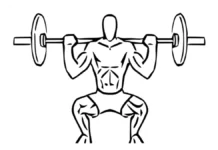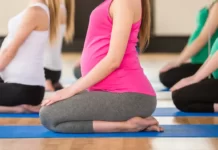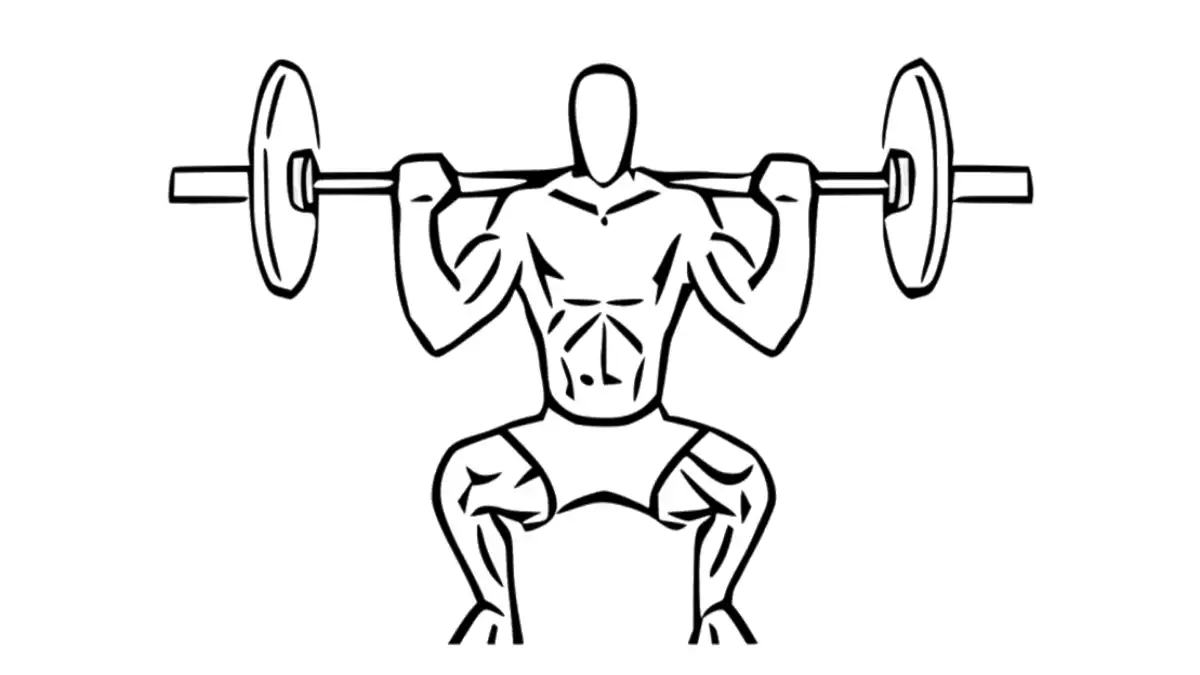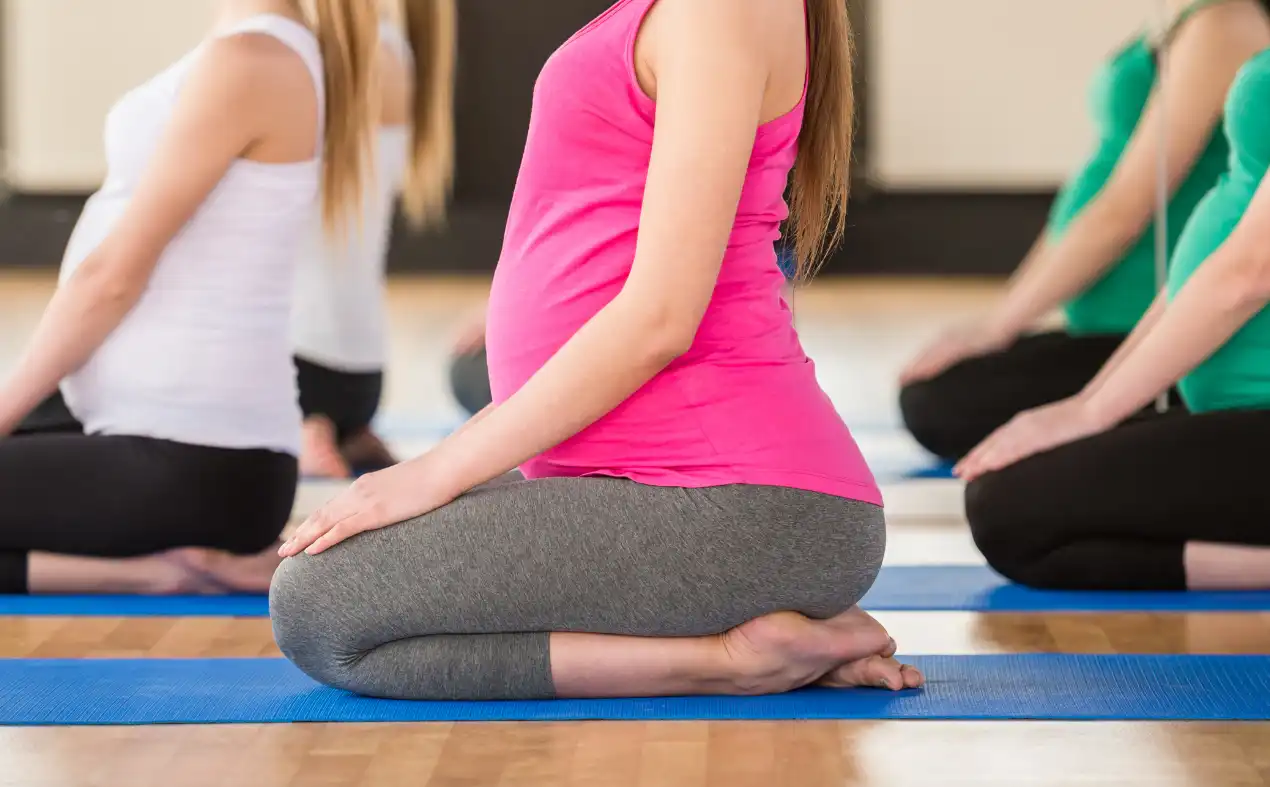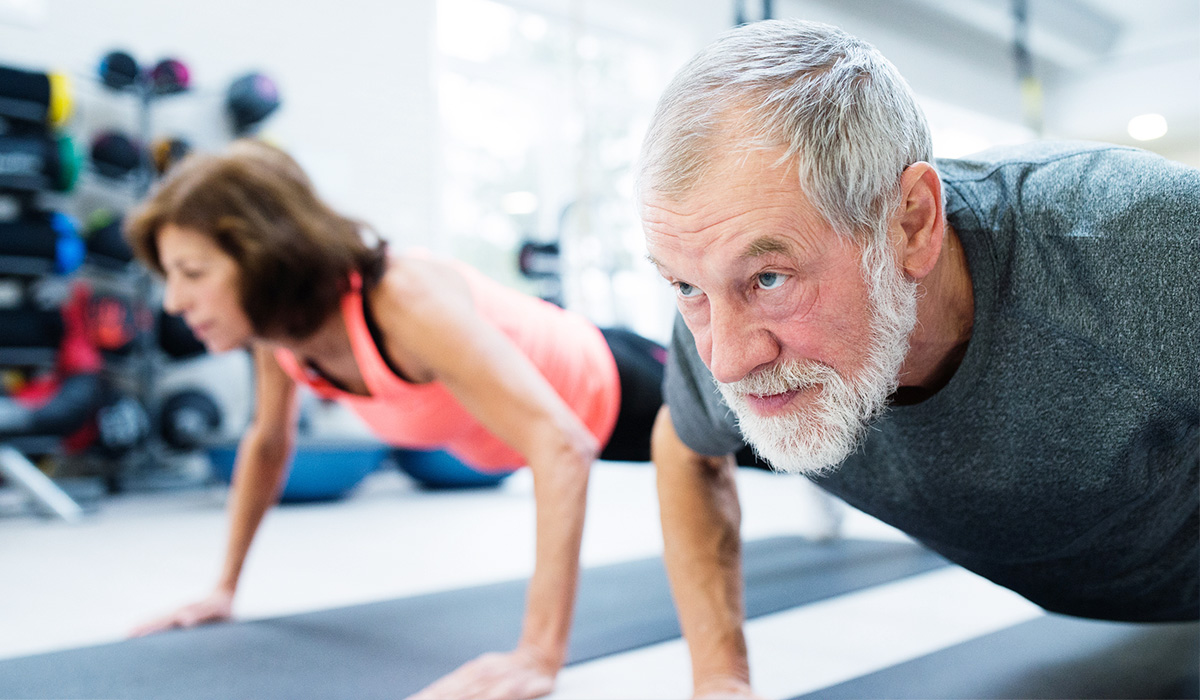Introduction: Benefits Associated with Sports Warm-Up
Warming up before engaging in sports or any physical activity is a universally accepted practice among athletes, coaches, and fitness enthusiasts. This preparatory phase is not merely a ritual but a crucial element in enhancing performance and preventing injuries. The primary purpose of a warm-up is to prepare the body both physically and mentally for the demands of the upcoming activity. It involves a series of exercises that gradually increase heart rate, blood flow to the muscles, and overall body temperature, thereby optimizing physiological functions.
Numerous studies have underscored the benefits of a well-structured warm-up routine. These benefits range from improved muscle flexibility and strength to better coordination and reaction times. By elevating muscle temperature, a warm-up increases the efficiency of muscle contractions and reduces the risk of strains and sprains. Furthermore, dynamic stretching and sport-specific drills included in warm-up sessions can enhance joint mobility and muscle elasticity, making the body more resilient to the physical stresses of sports.
Additionally, the psychological advantages of warming up should not be underestimated. A comprehensive warm-up can boost an athlete’s confidence, focus, and mental readiness, which are essential components for optimal performance. As the body transitions from a state of rest to heightened activity, the mind simultaneously gears up for competition, aiding in concentration and strategic thinking.
In this blog, we will delve deeper into the various benefits associated with sports warm-ups. We will explore the mechanisms behind these benefits, the different types of warm-up exercises, and the latest research supporting their efficacy. By understanding the importance and proper execution of warm-ups, athletes at all levels can enhance their performance and safeguard their health, ensuring they are well-prepared for the physical challenges ahead.
A physical training
Sports warm-up is a crucial step before any physical activity, providing substantial benefits for the optimal functioning of the body. Its direct impact on the muscular and joint system promotes adequate preparation for future physical demands.
When engaging in a sports warm-up, the body responds in a coordinated manner to meet the impending demand for physical activity. One of the main benefits is increased blood circulation to the muscles. This increased blood flow carries essential nutrients and oxygen to muscle tissues, improving their functional efficiency. At the same time, the blood transports metabolic products and waste products away from the muscles, helping to maintain a balanced internal environment.
The rise in muscle temperature is a direct result of increased blood circulation during warm-up. This increase in muscle temperature is beneficial in several ways. First, it increases muscle flexibility, which facilitates range of joint movement. More flexible muscles are better prepared to perform complex movements with greater efficiency and less tension, reducing the risk of injury.
Muscle reactivity is also improved thanks to the increase in temperature. Muscle fibers become more receptive to neural signals, promoting more precise muscle coordination. This results in a faster and more efficient muscle response when performing specific movements, which is essential for many sporting activities.
The joints, essential components of the musculoskeletal system, also benefit from sports warming. The induced heat promotes an increase in joint flexibility. More flexible joints allow for a greater range of motion, which is especially important for activities that involve complex movements or frequent changes in direction. Additionally, increased flexibility reduces stress on joints, minimizing the risk of injuries, including muscle sprains.
In short, sports warming represents a proactive preparation of the body for imminent physical activity. Increased blood circulation, increased muscle temperature, increased flexibility of muscles and joints, as well as improved muscle reactivity, are all benefits that help optimize performance and reduce the risk of injuries. Conscientiously integrating a warm-up routine before any sporting activity is therefore essential to support long-term muscle and joint health.
Different types of warm-up exercises
Warm-up exercises can be broadly categorized into several types, each serving a specific purpose in preparing the body for physical activity. The key types include general warm-ups, dynamic stretching, sport-specific drills, and passive warm-ups.
List of warm-ups
1. General Warm-Ups
General warm-ups are designed to increase overall body temperature and get the blood flowing to major muscle groups. These exercises are typically low to moderate intensity and can include activities such as:
- Jogging or Walking: A slow jog or brisk walk helps to gradually increase heart rate and blood circulation.
- Jumping Jacks: This exercise engages multiple muscle groups and gets the blood pumping.
- Arm Circles and Leg Swings: These movements prepare the joints and muscles for more intense activity by increasing mobility and flexibility.
2. Dynamic Stretching
Dynamic stretching involves active movements that stretch the muscles and tendons through their full range of motion. Unlike static stretching, dynamic stretches are performed in motion and help to warm up the muscles effectively. Examples include:
- Leg Swings: Forward and sideways leg swings help to loosen up the hips and legs.
- Lunges with a Twist: This exercise stretches the hip flexors, quads, and engages the core.
- Arm Swings: Swinging the arms across the body and above the head warms up the shoulders and upper back.
3. Sport-Specific Drills
Sport-specific drills are tailored to mimic the movements and skills required in a particular sport. These exercises help to prepare the body and mind for the specific demands of the activity. Examples include:
- Dribbling Drills for Basketball: Practicing dribbling techniques to prepare for game situations.
- Passing and Shooting Drills for Soccer: These drills enhance coordination and technique related to the sport.
- Serving and Volleying for Tennis: Practicing serves and volleys helps players warm up the muscles used in these specific actions.
4. Passive Warm-Ups
Passive warm-ups involve external methods to raise body temperature and increase blood flow. While less common in daily routines, they can be useful in certain situations. Examples include:
- Hot Showers or Baths: Using heat to increase muscle temperature and relaxation.
- Heating Pads: Applying heat to specific muscles or joints to prepare them for activity.
- Massage: Gentle massage can help to increase circulation and relax muscles.
5. Functional Movements
Functional movements are exercises that engage multiple muscle groups and joints, reflecting the movement patterns used in the sport or activity. These movements help in improving coordination, balance, and overall muscle activation. Examples include:
- Squats and Lunges: These exercises target the lower body and core, preparing the muscles for running, jumping, and other activities.
- Push-Ups: Engaging the upper body, push-ups prepare the chest, shoulders, and arms.
- Planks: Strengthening the core, planks help in stabilizing the body during various movements.
6. Plyometrics
Plyometric exercises involve explosive movements that can help enhance power and coordination. They are particularly useful for sports that require quick bursts of energy.
- Box Jumps: Jumping onto and off a box to engage the lower body and core.
- Skipping: Dynamic and rhythmic skipping to improve agility and coordination.
7. Foam Rolling
Foam rolling helps release muscle tightness and improve blood flow. It’s a form of self-myofascial release that can be used as part of a warm-up.
- Calf Roll: Rolling the foam roller under the calves to release tension.
- IT Band Roll: Targeting the iliotibial band to reduce tightness and improve flexibility.
8. Mobility Drills
Mobility drills focus on improving joint range of motion and muscle flexibility, which are essential for optimal performance.
- Hip Circles: Rotating the hips in circular motions to improve mobility.
- Shoulder Rotations: Moving the shoulders in various planes to enhance flexibility.
9. Aerobic Exercises
Low-intensity aerobic exercises help to gradually increase heart rate and breathing rate, preparing the cardiovascular system.
- Cycling: Using a stationary bike to gradually raise heart rate.
- Elliptical Machine: Engaging in low-impact cardio to warm up the entire body.
10. Core Activation
Core activation exercises target the muscles around the abdomen and lower back, ensuring stability and support during physical activity.
- Dead Bugs: A controlled core exercise that engages the abdominal muscles.
- Bird Dogs: Alternating arm and leg lifts to activate the core and back muscles.
11. Resistance Band Exercises
Using resistance bands can add a gentle load to warm-up exercises, helping to activate muscles more effectively.
- Band Pull-Aparts: Strengthening the upper back and shoulders.
- Lateral Band Walks: Activating the glutes and hip abductors.
12. Balance Exercises
Balance exercises enhance proprioception and coordination, which are crucial for many sports.
- Single-Leg Stands: Standing on one leg to improve balance and stability.
- Bosu Ball Exercises: Using a Bosu ball for various balance drills.
13. Dynamic Yoga Poses
Incorporating yoga poses dynamically can enhance flexibility, balance, and muscle activation.
- Sun Salutations: A series of flowing poses to warm up the entire body.
- Warrior Poses: Engaging the legs and core while improving flexibility.
14. Agility Drills
Agility drills improve quickness and coordination, essential for sports that require rapid changes in direction.
- Cone Drills: Running around cones to practice sharp turns and acceleration.
- Ladder Drills: Using an agility ladder to perform quick footwork exercises.
15. Partner Drills
Partner drills involve working with a partner to enhance motivation and engagement while warming up.
- Medicine Ball Throws: Passing a medicine ball back and forth to engage the core and upper body.
- Mirror Drills: One partner leads with movements while the other follows, improving coordination and reaction time.
16. Dynamic Lunges
Dynamic lunges help activate and stretch the lower body muscles, preparing them for more intense activity.
- Walking Lunges: Performing lunges while moving forward, engaging the quads, hamstrings, and glutes.
- Lateral Lunges: Side lunges to stretch and strengthen the inner thighs and hip adductors.
17. High Knees
High knees are a cardiovascular exercise that also engages the lower body, improving coordination and speed.
- Standard High Knees: Running in place with knees lifted high.
- High Knee Skips: Adding a skipping motion to high knees for increased intensity.
18. Butt Kicks
Butt kicks target the hamstrings and glutes, helping to loosen and activate these muscles.
- Running Butt Kicks: Running in place while kicking heels up to touch the glutes.
- Stationary Butt Kicks: Performing the same motion without moving forward.
19. Arm Swings and Crosses
These exercises help to warm up the shoulders, chest, and upper back, enhancing upper body flexibility.
- Horizontal Arm Swings: Swinging arms horizontally across the chest.
- Vertical Arm Swings: Swinging arms up and down alongside the body.
20. Leg Crossovers
Leg crossovers engage the core and lower body, improving flexibility and balance.
- Standing Leg Crossovers: Swinging one leg across the body in front of the other.
- Supine Leg Crossovers: Lying on your back and crossing one leg over the other while keeping the upper body stable.
21. Knee Hugs
Knee hugs help stretch the lower back and glutes, preparing the body for more dynamic movements.
- Standing Knee Hugs: Pulling one knee to the chest while standing, alternating legs.
- Walking Knee Hugs: Performing knee hugs while moving forward.
22. Heel Walks and Toe Walks
These exercises activate the lower legs and improve balance and coordination.
- Heel Walks: Walking on heels to engage the anterior tibialis.
- Toe Walks: Walking on toes to strengthen the calves.
29. Carioca Drill
The carioca drill improves lateral movement and coordination, essential for sports requiring agility.
- Basic Carioca: Performing a side-to-side crossover step while moving laterally.
- Advanced Carioca: Adding a higher knee lift or quicker pace for increased difficulty.
30. Inchworms
Inchworms are a full-body exercise that stretches the hamstrings, calves, and lower back while engaging the core and upper body.
- Basic Inchworm: Bending forward to touch the ground, walking hands out to a plank position, then walking feet towards hands.
- Inchworm with Push-Up: Adding a push-up at the plank position for added upper body activation.
31. Hip Openers
Hip openers increase flexibility and mobility in the hip joints, crucial for many athletic movements.
- Hip Circles: Rotating each hip in a circular motion to loosen the joint.
- Figure Four Stretch: Crossing one ankle over the opposite knee and pulling the leg towards the chest.
32. Marching
Marching helps to engage the lower body muscles and can be a lower-impact alternative to jogging or high knees.
- In-Place Marching: Lifting knees high while staying in place.
- Moving March: Marching forward or in a circle to engage the entire lower body.
33. Side Shuffles
Side shuffles improve lateral movement and agility, important for many sports.
- Basic Side Shuffle: Shuffling sideways with quick, light steps.
- Resistance Band Side Shuffle: Adding a resistance band around the thighs for increased difficulty.
34. Backward Running
Running backward activates different muscle groups than forward running, enhancing overall leg strength and coordination.
- Light Jog Backward: A slow pace to warm up the legs and improve balance.
- Sprint Backward: For more advanced athletes, increasing the speed can further engage the muscles.
35. Hip Flexor Stretch
The hip flexor stretch is crucial for loosening tight hip muscles, which are often neglected.
- Standing Hip Flexor Stretch: Lunging forward while keeping the back leg straight to stretch the hip flexor.
- Kneeling Hip Flexor Stretch: Kneeling on one knee and pushing the hips forward.
36. Scapular Retractions
These exercises target the upper back and shoulders, preparing them for physical activity.
- Standing Scapular Retractions: Squeezing shoulder blades together while standing.
- Bent-Over Scapular Retractions: Leaning forward and performing the retraction motion.
37. Neck Mobility Exercises
Neck mobility exercises help prevent stiffness and prepare the neck for dynamic movements.
- Neck Circles: Gently rotating the neck in a circular motion.
- Lateral Neck Stretches: Tilting the head from side to side to stretch the neck muscles.
38. Calf Raises
Calf raises are essential for warming up the lower legs and improving ankle stability.
- Basic Calf Raises: Raising up onto the toes and slowly lowering back down.
- Single-Leg Calf Raises: Performing the exercise on one leg for increased difficulty.
39. Mountain Climbers
Mountain climbers are a full-body exercise that increases heart rate and engages the core.
- Basic Mountain Climbers: Bringing knees to chest alternately while in a plank position.
- Cross-Body Mountain Climbers: Bringing the knee to the opposite elbow for a twist.
40. Spinal Twists
Spinal twists help to loosen up the back and improve spinal mobility.
- Standing Spinal Twists: Rotating the torso from side to side while standing.
- Seated Spinal Twists: Sitting and twisting the torso while keeping the lower body stable.
41. Step-Ups
Step-ups engage the lower body and improve coordination and balance.
- Basic Step-Ups: Stepping up onto a bench or sturdy platform with alternating legs.
- Weighted Step-Ups: Holding weights while performing the step-up for added resistance.
Performance Improvement
A well-prepared body is an essential foundation for optimal performance during any sporting activity. Sports warming plays a central role in this preparation by promoting the activation of the cardiovascular and respiratory systems, thus helping to improve aerobic capacity.
When an individual engages in a warm-up session, the cardiovascular system responds by increasing blood flow to the active muscles. This increase in blood flow ensures efficient delivery of oxygen and essential nutrients to muscle tissues, preparing the body for the impending effort. Additionally, the heart increases its heart rate in response to the increased demand, speeding up the transport of nutrients and oxygen to the muscles.
Stimulating the respiratory system is a key component of sports warm-up. Increasing respiratory rate and depth of breaths allows for increased oxygen absorption and more efficient elimination of carbon dioxide, thereby optimizing aerobic performance. Lung capacity also increases, allowing muscles to receive a continuous supply of oxygen needed for energy production during physical activity.
This improvement in aerobic capacity translates into several benefits during exercise. First of all, better endurance is observed, allowing the individual to maintain a sustained intensity of effort over a longer period. The ability to sustain prolonged efforts is particularly crucial in activities requiring constant muscular resistance.
In addition, sports warm-up contributes to faster recovery between efforts. The cardiovascular and respiratory systems, being already activated, are ready to respond to variations in exercise intensity, thus promoting rapid adaptation to changes in energy demand.
Additionally, overall efficiency during exercise is improved. Well-oxygenated and prepared muscles are better able to execute powerful and coordinated contractions. Coordination between the cardiovascular, respiratory and muscular systems is optimized, contributing to a more fluid and efficient overall performance.
In conclusion, sports warm-up constitutes a crucial step in preparing the body for physical effort by activating the cardiovascular and respiratory systems. This activation significantly contributes to improving aerobic capacity, resulting in better endurance, faster recovery between efforts and increased efficiency during exercise. Conscientiously integrating a warm-up session into your sports routine is therefore essential to maximize performance and optimize cardiorespiratory health.
Injury Prevention
Sports warming plays an essential role in injury prevention by acting on several physiological aspects. By increasing body temperature, this preparatory phase creates an optimal environment for the muscles, thereby significantly reducing the risk of traumatic injuries.
The rise in body temperature during sports warm-up is a direct result of increased metabolic activity. Chemical reactions in the body occur more efficiently at higher temperatures, which promotes better muscle flexibility. Well-warmed muscles become more flexible, allowing for increased range of motion without compromising the integrity of muscle fibers.
This improvement in muscle flexibility is crucial for preventing injuries, especially those related to excessive strain or sudden movements. Softer muscles are able to stretch further before experiencing excess strain, reducing the risk of muscle tears or strains.
In addition, the muscle preparation provided by sports warm-up improves the muscles’ ability to absorb shock. During many physical activities, muscles act as natural shock absorbers, lessening the impact on joints and surrounding tissues. Well-warmed muscles are more able to play this shock absorber role effectively, thus minimizing the stress exerted on the body’s structures.
By preventing muscle stiffness, sports warming also promotes better coordination between muscle groups. This reduces the risk of muscle imbalances and inappropriate compensations during exercise, factors which can lead to injuries due to excessive pressure on certain body parts.
In conclusion, sports warming, by increasing body temperature and improving muscle flexibility, represents an effective strategy to prevent injuries. Well-warmed muscles are less likely to experience excessive stress, better prepared to absorb shock, and have a lower likelihood of sustaining traumatic injuries. Conscientiously integrating a warm-up session into your exercise routine is therefore an essential preventative measure to support muscular health and minimize the risk of injury.
Activation of the Nervous System
Sports warming goes beyond physical benefits by also influencing the nervous system, playing a crucial role in the mental preparation of athletes. This preliminary phase prepares the brain by activating neural connections, resulting in notable improvements in coordination, proprioception and muscle responsiveness.
One of the responses of the nervous system to sports warming is the activation of neural connections. This activation stimulates communication between the brain and the muscles, promoting better synchronization of movements. Neural signals become more efficient, allowing muscles to respond quickly and precisely to commands from the brain.
Coordination, which results from the harmonious interaction between the nervous and muscular systems, is improved thanks to warming. Optimized neural connections facilitate more precise and smooth execution of movements, reducing the risk of awkward gestures or uncoordinated movements.
Proprioception, the body’s ability to perceive its position in space, is also positively influenced by warming. The activation of proprioceptive receptors is increased, allowing a finer perception of changes in position, movements and pressure on the joints. This contributes to better body awareness, an essential element for precise and efficient athletic performance.
Muscular reactivity, which involves the ability of muscles to respond quickly to stimuli, is a crucial component of sports warm-up. Neural connections activated during warming allow faster transmission of signals from the brain to the muscles, promoting a rapid and adaptive muscle response.
These neurological adjustments have significant implications in sports requiring rapid and precise movements. Well-warmed athletes are able to react more quickly to external stimuli such as changes of direction, opposing movements or visual stimuli. This increased responsiveness can mean the difference between success and failure in situations where speed of decision and execution is critical.
In short, sports warm-up has a profound impact on the nervous system, mentally preparing athletes for optimal performance. By activating neural connections, improving coordination, proprioception and muscular reactivity, warming contributes to complete mental preparation, essential in sports requiring rapid and precise movements. Consciously integrating this mental dimension into the warm-up routine can be a key strategy for improving overall athletic performance.
Mental Preparation
In addition to the physical benefits, sports warm-ups offer significant mental benefits. This preparatory phase provides athletes with the crucial time needed to mentally focus on the task at hand, eliminating outside distractions and promoting a positive mental attitude. By engaging in a routine warm-up, athletes can establish a sense of ritual and familiarity, which helps in reducing anxiety and increasing mental clarity.
During a warm-up, the mind transitions from a state of rest to one of heightened awareness and readiness. This process enhances concentration, allowing athletes to visualize their performance and mentally rehearse their movements. Visualization techniques employed during warm-ups can create mental blueprints of successful performance, which can be particularly beneficial in complex or high-pressure sports.
Moreover, a well-structured warm-up can significantly boost an athlete’s self-confidence. By gradually increasing the intensity of their activities, athletes can feel more in control of their bodies and their abilities. This progressive build-up not only prepares the muscles but also reassures the mind that the body is ready to perform at its best. Confidence gained during warm-ups can translate into improved performance, as athletes are more likely to trust their training and instincts during the actual event.
Promoting a positive mental attitude is another critical aspect of the mental preparation afforded by warm-ups. Engaging in familiar and effective warm-up routines can instill a sense of preparedness and optimism. This positive mental state is essential for peak performance, as it can influence an athlete’s resilience and ability to handle unexpected challenges during competition.
In essence, the mental preparation that occurs during a warm-up is as important as the physical readiness it fosters. By focusing the mind, boosting confidence, and promoting a positive attitude, warm-ups help create an optimal mental state for athletic performance. This holistic approach ensures that athletes are not only physically prepared but also mentally primed to give their best effort.
Promotes the Transition to Intense Effort
Gradual warming allows the body to smoothly transition from a resting state to more intense effort. This avoids sudden shocks to the cardiovascular system and prepares the muscles to function optimally from the start of the sporting activity. A smooth transition helps minimize premature fatigue and maximize energy efficiency.
When an athlete goes from a state of rest directly to intense activity, the sudden demand on the cardiovascular system can lead to inefficient blood flow and oxygen delivery to the muscles. This abrupt change can cause a rapid increase in heart rate and blood pressure, which may not only affect performance but also pose health risks, particularly for those with underlying cardiovascular conditions. Gradual warming helps in mitigating these risks by steadily increasing heart rate and blood circulation, allowing the cardiovascular system to adapt progressively to the physical demands.
Additionally, warming up gradually increases muscle temperature, which is crucial for optimal muscle function. Warmer muscles are more flexible and less prone to injuries such as strains or tears. Increased temperature also enhances metabolic reactions within muscle cells, ensuring that energy production processes are working efficiently. This preparatory phase ensures that muscles are ready to perform at their peak right from the start, reducing the likelihood of early fatigue and maintaining high energy levels throughout the activity.
Another significant benefit of a gradual warm-up is the activation of the nervous system, which improves coordination and reaction times. By progressively engaging in more dynamic movements, the neuromuscular pathways become more responsive, enhancing the athlete’s overall performance. This activation also aids in muscle memory, allowing the body to execute complex movements with greater precision and control.
Moreover, a well-structured warm-up routine that includes dynamic stretching and sport-specific drills can help prepare the joints and connective tissues for the physical activity ahead. This not only reduces the risk of injuries but also ensures that the body’s biomechanics are optimized for efficient movement patterns. As a result, athletes can perform movements with greater ease and less energy expenditure, leading to improved endurance and performance.
Conclusion
In conclusion, the benefits associated with sports warm-ups extend far beyond mere tradition or routine. A well-structured warm-up is fundamental to both physical and mental preparation for athletic performance. Physically, it enhances muscle flexibility, increases blood flow, and optimizes metabolic processes, thereby reducing the risk of injuries and improving overall efficiency and endurance. Mentally, it aids in focusing the athlete’s mind, boosting confidence, and promoting a positive attitude, all of which are crucial for peak performance.
The gradual transition from rest to intense effort facilitated by a warm-up is particularly important. It prepares the cardiovascular system, muscles, and nervous system for the demands of the activity, ensuring that athletes can perform at their best from the start and maintain high energy levels throughout. This comprehensive approach not only improves immediate performance but also contributes to long-term athletic health and resilience.
In light of these benefits, athletes and coaches should prioritize effective warm-up routines tailored to the specific demands of their sport. By doing so, they can enhance performance, prevent injuries, and foster a positive mental state, setting the stage for success in their athletic endeavors.
Reference
- Enoka, R.M., & Duchateau, J. (2016). Translating fatigue to human performance. Medicine and science in sports and exercise, 48(11), 2228-2238. ↩
- Bishop, D. (2003). Warm up I: potential mechanisms and the effects of passive warm up on exercise performance. Sports medicine, 33(6), 439-454. ↩
- Woods, K., Bishop, P., & Jones, E. (2007). Warm-up and stretching in the prevention of muscular injury. Sports Medicine, 37(12), 1089-1099. ↩
- Rupp, K.A., Herman, J.A., & Hertel, J. (2012). Effect of neuromuscular electrical stimulation during warm-up on hamstring flexibility. Journal of Sport Rehabilitation, 21(3), 253-259. ↩
- Frank, DL, Khorshid, L., Kiffer, JF, Moravec, CS, & McKee, MG (2010). Biofeedback in medicine: who, when, why and how? Mental Health in Family Medicine, 7(2), 85. ↩
- Bishop, D. (2003). Warm up II: performance changes following active warm up and how to structure the warm up. Sports medicine, 33(7), 483-498
- McCrary, J. M., Ackermann, B. J., & Halaki, M. (2015). A systematic review of the effects of upper body warm-up on performance and injury. British Journal of Sports Medicine, 49(14), 935-942. doi:10.1136/bjsports-2014-094228.
- Bishop, D. (2003). Warm up I: Potential mechanisms and the effects of passive warm up on exercise performance. Sports Medicine, 33(6), 439-454. doi:10.2165/00007256-200333060-00005.
- Fradkin, A. J., Zazryn, T. R., & Smoliga, J. M. (2010). Effects of warming-up on physical performance: A systematic review with meta-analysis. Journal of Strength and Conditioning Research, 24(1), 140-148. doi:10.1519/JSC.0b013e3181c643a0.
- Woods, K., Bishop, P., & Jones, E. (2007). Warm-up and stretching in the prevention of muscular injury. Sports Medicine, 37(12), 1089-1099. doi:10.2165/00007256-200737120-00006.
- McGowan, C. J., Pyne, D. B., Thompson, K. G., & Rattray, B. (2015). Warm-up strategies for sport and exercise: Mechanisms and applications. Sports Medicine, 45(11), 1523-1546. doi:10.1007/s40279-015-0376-x.
- Barroso, R., Esteves, G. P., Ugrinowitsch, C., Tricoli, V., & Roschel, H. (2013). The effects of different intensities and durations of the general warm-up on leg press 1RM. Journal of Strength and Conditioning Research, 27(4), 1007-1013. doi:10.1519/JSC.0b013e318260b50a.
- Bishop, D., Bonetti, D., & Dawson, B. (2001). The effect of three different warm-up intensities on kayak ergometer performance. Medicine & Science in Sports & Exercise, 33(6), 1026-1032. doi:10.1097/00005768-200106000-00022.
- Yamaguchi, T., Takizawa, K., & Shibata, K. (2015). Acute effect of dynamic stretching on muscle strength, power and flexibility in young and older women. Journal of Sports Science & Medicine, 14(1), 113-120.
- Ingraham, S. J. (2003). The role of flexibility in injury prevention and athletic performance: Have we stretched the truth? (A review of the literature). North American Journal of Sports Physical Therapy, 8(3), 141-151.
- Taylor, K. L., Sheppard, J. M., Lee, H., & Plummer, N. (2009). Negative effect of static stretching restored when combined with a sport-specific warm-up component. Journal of Science and Medicine in Sport, 12(6), 657-661. doi:10.1016/j.jsams.2008.04.004.



